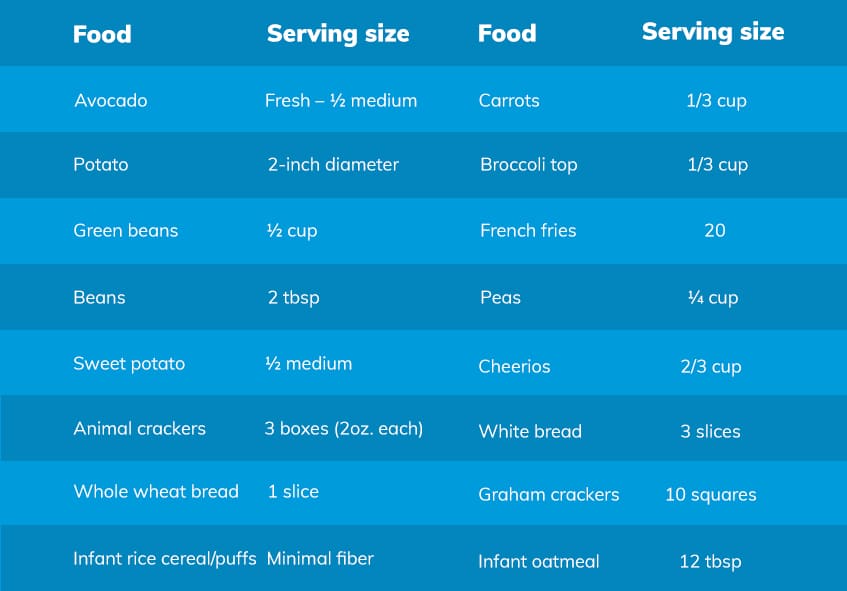
Fiber- grandma called it roughage
It's important that we get plenty of "roughage" in our diets. That's what grandma called fiber. Roughage, is the fibrous parts of plant foods that are not totally digested and make it easier to poop.
Fiber in our diets can also decrease the risk for hemorrhoids, diverticulitis and heart disease. It also increases feelings of fullness which can help with weight control.
Types of Fiber
There are two types of fiber: soluble and insoluble. Soluble fiber, is the kind found in oats, fruits, beans and psyllium (used in fiber pills and products), that forms a gel. That gel slows stomach emptying, lowers blood cholesterol levels, and helps regulate sugar and insulin levels.
Insoluble fiber, is the kind found in vegetables, nuts and other whole grains. This type of fiber remains the same as it passes through the intestine, providing bulk or roughage.
High-Fiber Foods
| Fruits: Each serving has approximately 2 grams of fiber. Older infants should have one or two each day. Avoid giving fruit with pits to infants. Remember to remove skins and seeds. |
| Apple, 1 small Cantaloupe, 1 cupa Pear, 1/2 smallApricot, 2 medium Cherries, 10 large, pitted Plum, 2 smallBanana, 1 small Dried figs, 1.3 cup Strawberries, 1/2 cupBlackberries, 1/2 cup Peach, 1 medium Watermelon, 1–3 cupsa |
| Cooked VegetablesEach serving has about 2 grams of fiber. Children should have two servings or more each day. Children 6 to 12 months should have one to two fistfuls per day; children one to three years, half a cup of vegetable per day. |
| Avocado, fresh, 1/2 medium Carrots, 1/3 cup Potato, 2-inch diameterBroccoli top, 1/3 cup Green beans, 1/2 cup Beans, 2 tbsp. Peas, 1/4 cup Sweet potato, 1/2 medium |
| Bread and CerealInfants need iron from infant cereal or meat, approximately 2 ounces per day. Each serving has about 2 grams of fiber (but not needed for infants. |
| Cherrios, 2/3 cup Animal crackers, 3 boxes (2 oz. each)White bread, 3 slices Whole-wheat bread, 1 slice Graham crackers, 10 squares Infant rice cereal and puffs have minimal fiber Infant oatmeal, 12 tbsp. |
a Estimates vary widely.
Source: Adapted from S. A. Cohen, Healthy Babies, Happy Kids (New York: Delilah Books, 1982), 168.
How Much is Enough?
Infants should be gradually introduced to fiber, usually as fruits and veggies, so that by a year of age they are consuming 5 grams daily. After that, you can estimate how much a child needs by adding 5 grams to their age. Thus a 3 year old should receive about 8 grams and a 12 year old about 17 grams with adults needing 20-30 grams per day.
We do suggest that kids aim to get 5 or more servings of fruits and vegetables in a day. Each serving for a child is about the size of their fist. Thus, it can be easy to encourage kids to eat "five fistfuls" a day. Another trick is to have a child hold two of their fists together to show them that its about the size of an apple or peach. This can help make the task of eating five fist fuls seem like an easy goal to accomplish.

How Much is Too Much?
The one problem with fiber is that it can cause gas, especially when eating foods such as beans, broccoli, cauliflower, cabbage and mushrooms. Gradually introduce these foods in small quantities. A probiotic can sometimes help by providing healthy intestinal bacteria that actually feed off the fiber.





